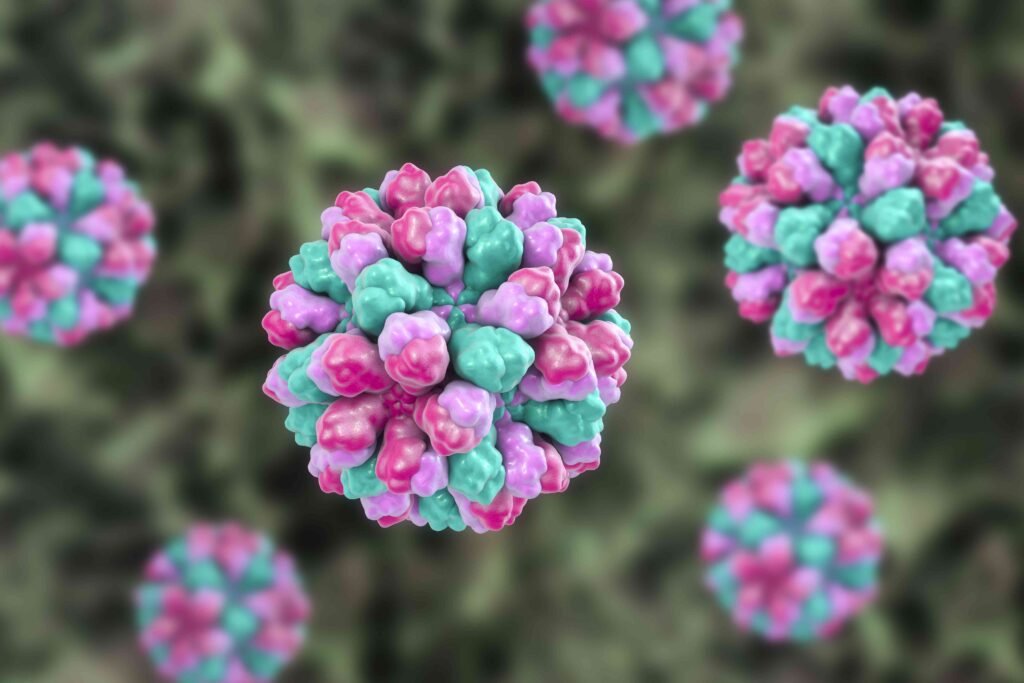:max_bytes(150000):strip_icc():format(jpeg)/Health-GettyImages-973896260-5cdfde2ecbfc44d688b1b0481edd7d63.jpg)
A new strain of norovirus makes up the majority of outbreaks nationwide—and it may offer an explanation for the steep rise in infections over the past month.
The new norovirus strain, called GII.17[P17], was responsible for nearly 70% of all norovirus outbreaks from September 2024 through the end of December 2024, according to data from the Centers for Disease Control and Prevention.
The CDC recorded 91 norovirus outbreaks from state health departments for the week ending Dec. 5—the highest number recorded in recent years. Norovirus on cruise ships also reached higher-than-normal levels in December, with at least 6 reported norovirus outbreaks on vessels.
Norovirus—particularly the GII.17 strain—is “everywhere” right now, Jan Vinjé, PhD, head of the CDC’s National Calcivirus Laboratory, recently told CBS News.
“It is too early to tell if this strain is associated with more severe norovirus disease,” Vinjé said, “but likely lower population immunity is the reason for the early surge of an otherwise seasonal increase of this virus.”
Here’s what you need to know about the new norovirus strain, whether it’s really causing an unusual uptick in cases, and how to protect yourself from illness.
It’s important to note that the new norovirus strain, though newer, isn’t technically brand new,
“The GII.17 strain emerged in 2014-15 and has spread worldwide,” infectious disease expert Amesh A. Adalja, MD, a senior scholar at the Johns Hopkins Center for Health Security, told Health.
However, the strain only rose to dominance in norovirus outbreaks over a year ago; between Sept. 1, 2023 through Aug. 31, 2024, GII.17 accounted for 109 norovirus outbreaks.
Meanwhile, the previous leading strain, GII.4—which had dominated previous norovirus outbreaks since 2012, according to Vinjé—only made up 84 outbreaks. So far this year, from Sept. 1, 2024 through Dec. 31, 2024, GII.17 has made up 39 outbreaks; GII.14 has accounted for four.
It’s possible that, with GII.17 being a newer strain, there isn’t as much built-up population immunity to it, potentially leading to more infections.
Thomas Russo, MD, professor and chair of infectious diseases at the University at Buffalo, agrees. “If someone has developed some immunity against norovirus from prior infections, this variant may be able to evade it,” he told Health.
But more data is needed to parse out whether GII.17 is truly behind a surge in cases.
Additionally, GII.17 and GII.14 aren’t the only norovirus strains. There are numerous strains of norovirus, which means people can (and do) get norovirus many times in their lives. While you can develop protection against specific types of norovirus, it’s not known how long that protection lasts—and being infected with one type of norovirus may not protect you from other types.
“It’s not dissimilar to what we see with COVID,” said Russo. “If you’re infected, you may have a degree of immunity but, if you get a variant that evolves and evades that immunity, that will increase the pool of susceptible individuals.”
The short answer is no. “There’s no clinically meaningful difference with this strain,” said Adalja.
That means GII.17 is likely to cause the typical norovirus symptoms like diarrhea, vomiting, nausea, and stomach pain, along with fever, headache, and body aches.
Recommendations for norovirus prevention and treatment also don’t change with a newer norovirus strain, Dr. Russo said.
For prevention, that means regularly washing your hands well with soap and water. (Hand sanitizer is not very effective against norovirus.) Washing your clothes in hot water may also be helpful. It’s a good idea to try to avoid people who are obviously sick, too, said Russo.
There is no specific treatment for norovirus, but Dr. Russo recommends doing your best to stay well hydrated. “Taking small sips of liquids may help you to keep them down,” he said. If you have a fever or body aches, an OTC medication like acetaminophen may also help.
Dr. Russo stresses the importance of doing what you can to lower your risk of norovirus. “Norovirus is not fun,” he said. “It’s 24 to 48 hours of misery.”













